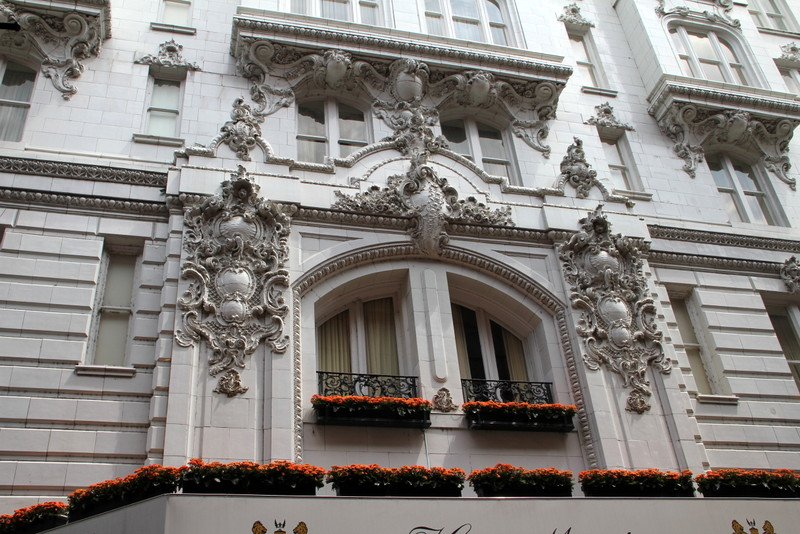#7032. Luxurious Beaux-Arts Historical Façade with Exquisite Stucco Work and Floral Arrangements
We are looking at a magnificent example of a luxurious historical façade in the Beaux-Arts style. The building impresses with its exquisite stucco work and rich decorative elements characteristic of the French architectural tradition of the late 19th to early 20th century. The façade is clad in light-colored stone, giving it elegance and monumentality.
Particularly noteworthy are the baroque cartouches above the window openings and around the central arched window with a balcony. These decorative elements are executed with impressive detail and create a depth effect on the façade surface. The central arch with balconies on both sides serves as a compositional center, drawing the eye to the middle part of the building.
Bright floral arrangements in orange tones on the balconies and in the lower part of the façade create a pleasant color accent, enlivening the strict monochrome of the stone finish. This is an excellent example of how plant elements can harmoniously complement an architectural composition.
When designing modern façades, one can draw from this example the idea of using symmetry, playing with relief and decorative façade elements, which, even in simplified form, can give a building individuality and character. Floral compositions are also a universal technique for softening strict lines and enlivening the overall appearance of a building in any architectural style.
